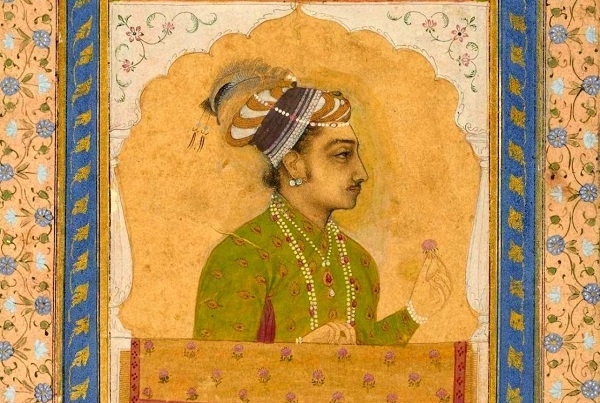How Dara Shikoh’s translation of 52 Upanishads in Persian found it way to Europe
- Aniket Pingley, Ph.D

During his presentation for fundraising the next day, Francois also talked about the Mughal monarch Dara Shikoh¹, the elder brother of Aurangzeb and son of Shah Jahan. I had never heard of him until then. Born in the seventeenth century, Shikoh’s mind had a liberal persuasion, unlike his younger sibling. The time-frame was around the 1650s. In his Delhi palace, the Manzil-e-Nigambodh — named after the Nigambodh ghat on the Yamuna, he had convened a gathering of Hindu scholars to enlighten him about the teachings of Upanishads. The most prominent of these scholars was Kavindracharya Saraswati of Varanasi. It is believed that Dara Shikoh personally translated fifty-two Upanishads into Persian. In 1656, he published his translation under the title Sirr-e-Akbar. Three years later Aurangazeb usurped the throne and had Shikoh beheaded on the charge of being a religious apostate — why am I not surprised?
So what happened to Sirr-e-Akbar, you may ask. Interestingly, Shikoh’s personal physician was French! He went by the name of Monsieur Francois Bernier — the only other Francois I know, literally. He managed to get his hands on a copy of Sirr-e-Akbar. In 1671 he carried the copy with him to Paris. From 1659 to 1671, he had served as a personal physician to even Aurangazeb, which speaks volumes of his courage. For the next hundred-odd years, Sirr-e-Akbar survived in France. French Indologist Anquetil Du Perron translated it into Latin, which took him twenty-five years³! He had also received another manuscript of Sirr-e-Akbar from another French then residing in Awadh (central Uttar Pradesh today). Du Perron titled his translation ‘Oupenkhat’ (ugh!).
"The West has assimilated Indian wisdom merely through a multi-hop series of translations and that too having missed the essential part — guidance of a Guru who teaches through self-experience. In contrast it incessantly attempts to force-fit its narrow version of nationalism on India directly — without any hops or context-orientation. Such is the hypocrisy of the West.”
So the French had it, then why not Germans! ‘Oupenkhat’ wowed Arthur Schopenhauer, a great German philosopher. He was convinced that Upanishads were the highest form of human wisdom. What a revelation! No, not what Schopenhauer thought about Upanishads but that Max Muller is not the only German scholar to have studied them. In his book Six Systems of Indian Philosophy, Muller agrees with Schopenhauer about the profundity of Upanishads⁴. Thinkers, philosophers, and scientists like Erwin Schrodinger, Albert Einstein, Sigmund Freud, Leo Tolstoy, George Bernard Shaw, etc. are believed to have been greatly influenced by Arthur Schopenhauer².
Come to think of it, one must wonder what percentage of humanity has been, and continues to be, influenced directly and indirectly, knowingly and unknowingly by the wisdom of Upanishads.
Samskrita -> Persian -> French -> Latin -> English … Phew!, that’s quite a journey. Out of two-hundred or so, Dara Shikoh translated one-fourth, i.e. fifty-two Upanishads, the ones then considered the most prominent. The recorded history of Upanishads, i.e. the written form, is approximately 2000 to 2700 years old. They are the fourth layer in the Vedas — the first three being Samhita, Brahmana and Aranyaka⁵. Given the practice of oral tradition of the ancient Hindu education system for centuries, it is impossible to ascertain the timeline of the origins of the Upanishads. However, we can say with surety that it is a collective wisdom of the greatest free thinkers ever born on this planet.
The journey of Upanishads to the West fascinated me. Hope it does the same to you! Sadly, this story is not part of the curriculum of high-school education in India.
I will end this blog with the first Shanti Mantra from Isha Upanishad, which is part of Yajurveda:
ॐ पूर्णमदः पूर्णमिदं पूर्णात् पूर्णमुदच्यते।
पूर्णस्य पूर्णमादाय पूर्णमेवावशिष्यते॥
Aum Shantih … Shantih … Shantihi
Bharat Mata Ki Jai
References:
[1] https://en.wikipedia.org/wiki/Dara_Shikoh
[2] https://en.wikipedia.org/wiki/Arthur_Schopenhauer
[3] Understanding Schopenhauer through the Prism of Indian Culture: Philosophy, Religion and Sanskrit
[4] http://www.arthur-schopenhauer-studienkreis.de/Max-Mueller/max-mueller.html
[5] The Vedas and Upanishads for Children by Roopa Pai
